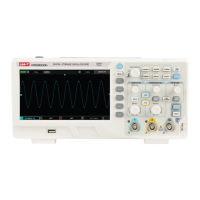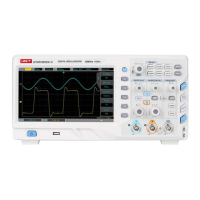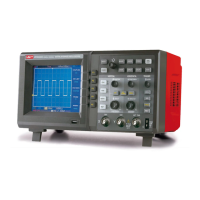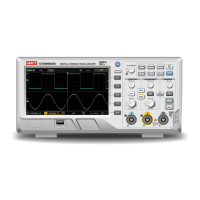UTD2000 Series User Manual
21
2.8 FFT spectral analysis
Enter FFT (fast fourier transform) operation, the time domain (YT) signal can be
converted into frequency domain signal. At FFT operation, it is convenient to observe
signals of the following types:
● Measure harmonic content and distortion in the system
● Display noise characteristic in DC power supply
● Analyze vibration
Table 2-4:FFT Menu Description
FFT mathematical operation
You can select signal source as
CH1 or CH2
Set to select Hanning, Hamming,
Blackman, or Rectangle window
function
Set vertical units as Vrms or
dBVrms
Select FFT window
Assuming that YT waveform is continuously repeated, DSO shall conduct FFT
conversion for time record with finite length. In this case, when the cycle is an integer, YT
waveforms are of the same amplitude at the starting and ending positions, without
interrupting. However, if the cycle of YT waveform is not an integer, the waveform
amplitudes shall be different at starting and ending positions. Therefore, high-frequency
transient interruption shall occur at the joints. In frequency domain, this effect is called
leakage. Therefore, in order to avoid the generation of leakage, by multiplying original
waveform by a window function, the value at forced starting and ending positions is 0. See
the table below for window function application:
Table 2-4:FFT window function
The most suitable measurement content
The best frequency resolution and the worst
amplitude resolution. It is basically similar to
the condition without window.
Signal levels, before and after transient state or
short pulse, are basically equal. Constant
amplitude sinusoid with very similar frequency
possesses bandwidth random noise with slow
spectrum change.
Compared with rectangular window, it has
better frequency resolution and worse
amplitude resolution.
Random noise of sine, cycle and narrow-band.
The frequency resolution of Hamming window
Signal levels, before and after transient state or
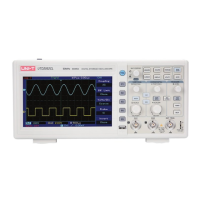
